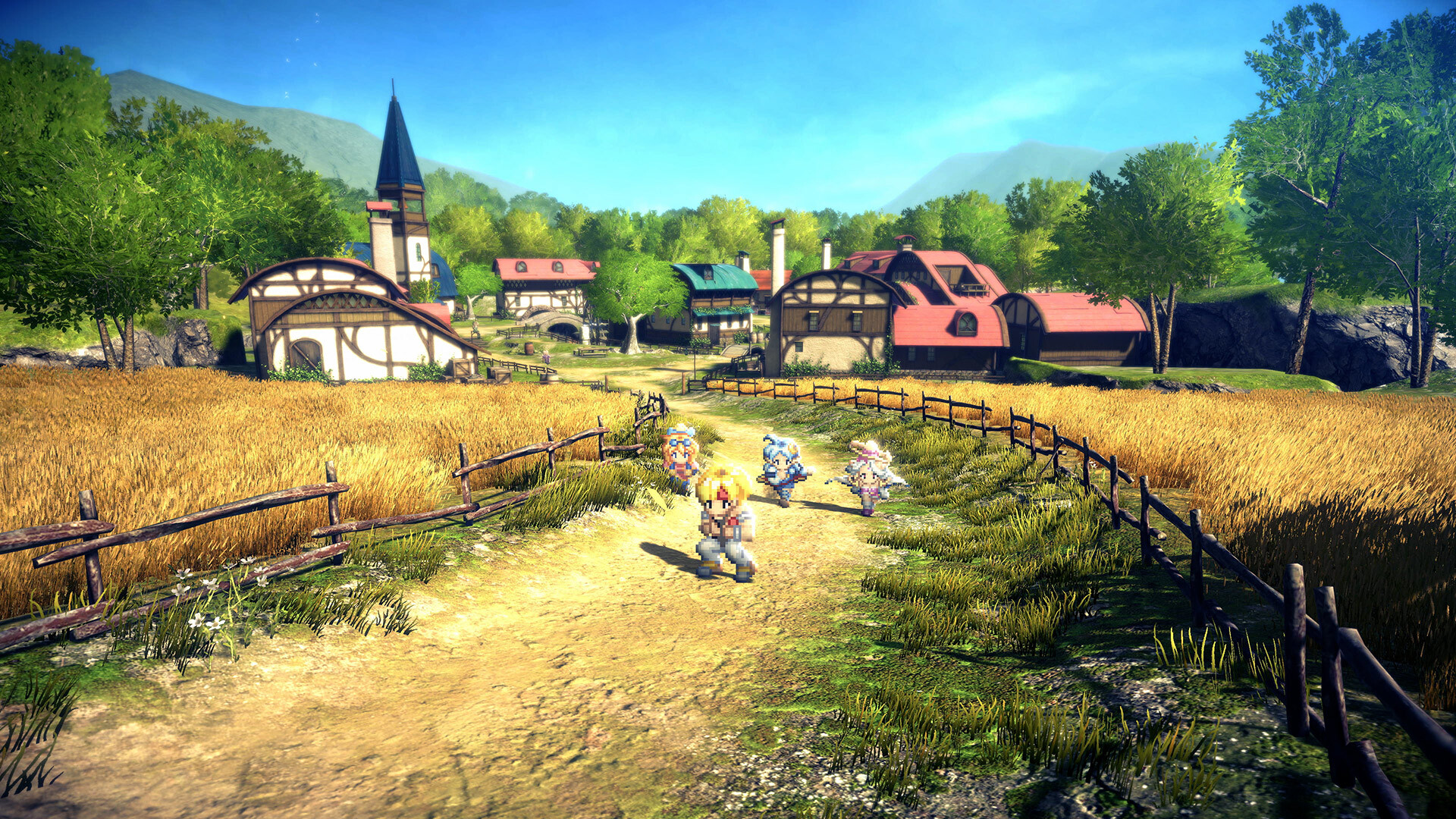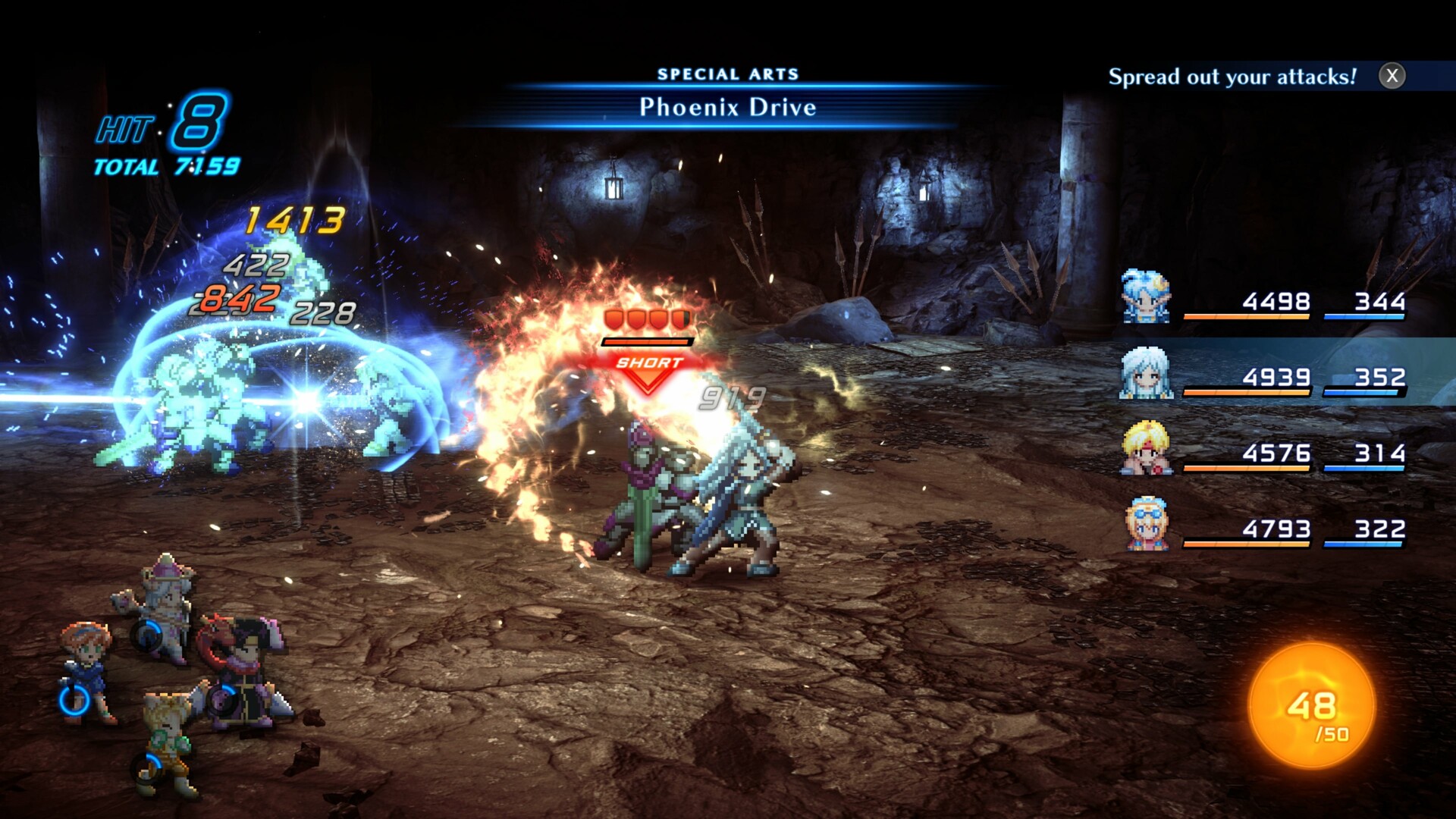As someone new to the Star Ocean series, I had heard so many different opinions on the series over the years that I’d always been curious about jumping in, but not quite sure where to start. Well, apparently the second game in the franchise is regarded by many fans as one of the best, so I was really excited when Star Ocean: The Second Story R was revealed in a recent Nintendo Direct (alongside a jaw-dropping new art style). I was able to demo this remake at PAX West 2023, and left with an extremely positive first impression; exciting combat, old-school strategic depth and outstanding production values are all lining up to make this one of my most anticipated RPGs.
While some online have adopted the term “HD-2D” to describe Second Story R’s new art style, this is a bit of a misnomer; what we have here certainly shares some qualities and general polish with the art direction of games like Octopath Traveler II, but it really is its own thing and looks unlike any other RPG I’ve played. The pixel art of the party members in the overworld is drop-dead gorgeous, and yet their presence in a realistically textured and lit 3D space somehow also manages to feel completely natural. The small area I was able to explore was a mountainous region, with a lot of weaving paths winding through the rock faces that alluded to an impressive scope of the world. There’s countless little details, from gently swaying foliage to beautifully puffy clouds that float through the peaks, contributing to a world that feels grand and vibrant. If this level of care extends across the full scope of the world, the sense of adventure in Second Story R has the potential to feel truly sprawling.

My demo didn’t cover any significant story content, unfortunately, but did give me plenty of chances to try my hand at combat. While exploring, blue clouds of vapors indicated combat encounters; touching them immediately transports the party to battle arenas themed around the current biome. If any enemy gets the jump on you in the overworld, your party might get hit with a debuff right at the start, so like in other recent RPGs there’s a good incentive to sneak up from behind and strike first. Combat happens in real time, with various attacks mapped to the face buttons, but it’s also possible at any time to pause the action and issue specific commands for more granular control. You can swap between controlling any of your party members at will, and any that you’re not directly controlling will act on their own. I found that their AI seemed reasonably intelligent, but I appreciated the option to intervene so I could line up some massive damage-dealing combos.
I would enter the fray by dealing some basic physical attacks, using the opportunity to gauge enemy attack patterns and potential weaknesses. As far as I could tell, the game didn’t communicate what those weaknesses were during the heat of battle unless I managed to discover them myself (although it’s very possible I missed those cues somehow), so some amount of trial and error was a part of my early battles. There’s a really wide range of actions to choose from, but they’re mostly sequestered into two categories – Items and Spells – that contain everything you’d expect, from ways to heal your party to massive screen-filling special attacks. Everything operates on a cooldown to prevent players from relentlessly spamming powerful attacks (which will also drain your MP), but there’s still a high degree of onscreen chaos. I also had the option to give instructions to each party member to define a more general strategy for them, like “Don’t use MP”, “Attack them with everything” or my personal favorite, “Run around and evade” (which, when in doubt, is always at least a decent survival strategy.)

Combat is incredibly flashy and makes you feel like an unstoppable force, but also makes it very easy to get distracted from monitoring your party’s health, so while it’s possible to just mash the attack button and at least survive most encounters, carelessness does have repercussions. Additionally, breaking an enemy’s defense seems like the most important element to maximizing attack power – also allowing the player to dish out very powerful attacks called Assault Actions – so there’s additional incentive to develop a strategy on the fly. The controls were immediately simple to grasp; really, the thing that impressed me the most was just how quickly I was able to come to terms with the combat system with minimal tutorials needed. I’m knees-deep in a Xenoblade playthrough at the moment, so I really appreciate the way Second Story R’s mechanical depth manages to exist while encouraging players to dive into it at their own pace.
Outside of battle, there are even more ways to customize your party. The usual options like different weapons and armor are all there, as well as accessories that can raise certain stats while equipped during certain combat situations. You can also level up skills for specific party members – for example, investing skill points in Claude’s Mental Science skill increases his “knowledge of the mind and supernatural powers,” which in-game means that that his MP will raise by 5 each time he levels up. There are a ton of these to invest in, and I imagine players who appreciate extremely granular party management will get a lot out of this. You can even arrange the order in which party members are organized at the start of a battle, with different bonuses attached to different lineups.
If the rest of Second Story R can match the depth and intuitiveness of the game’s battle system, this could very well be the perfect entry point for franchise newcomers like me. I also simply can’t wait to see how stunning the game will inevitably look on the Switch OLED’s screen.
Star Ocean: The Second Story R launches on Switch on November 2, 2023 – let us know in the comments if you plan on picking this one up.